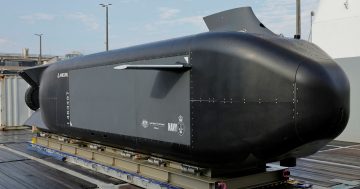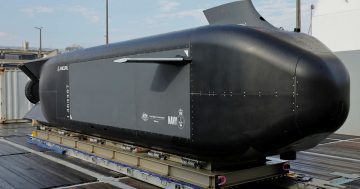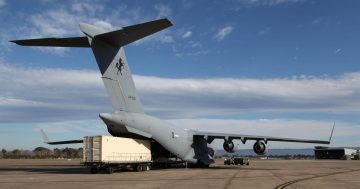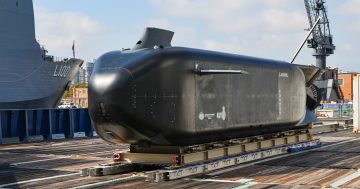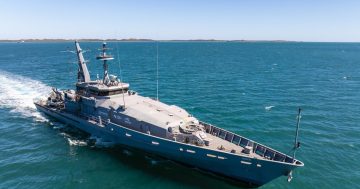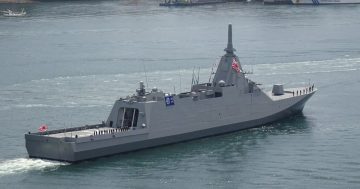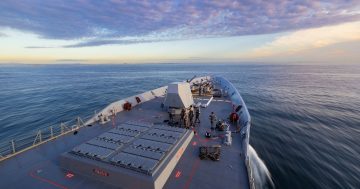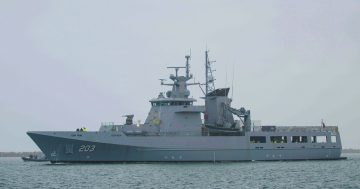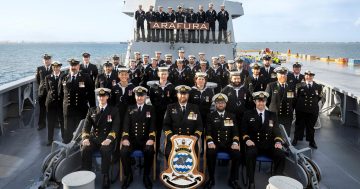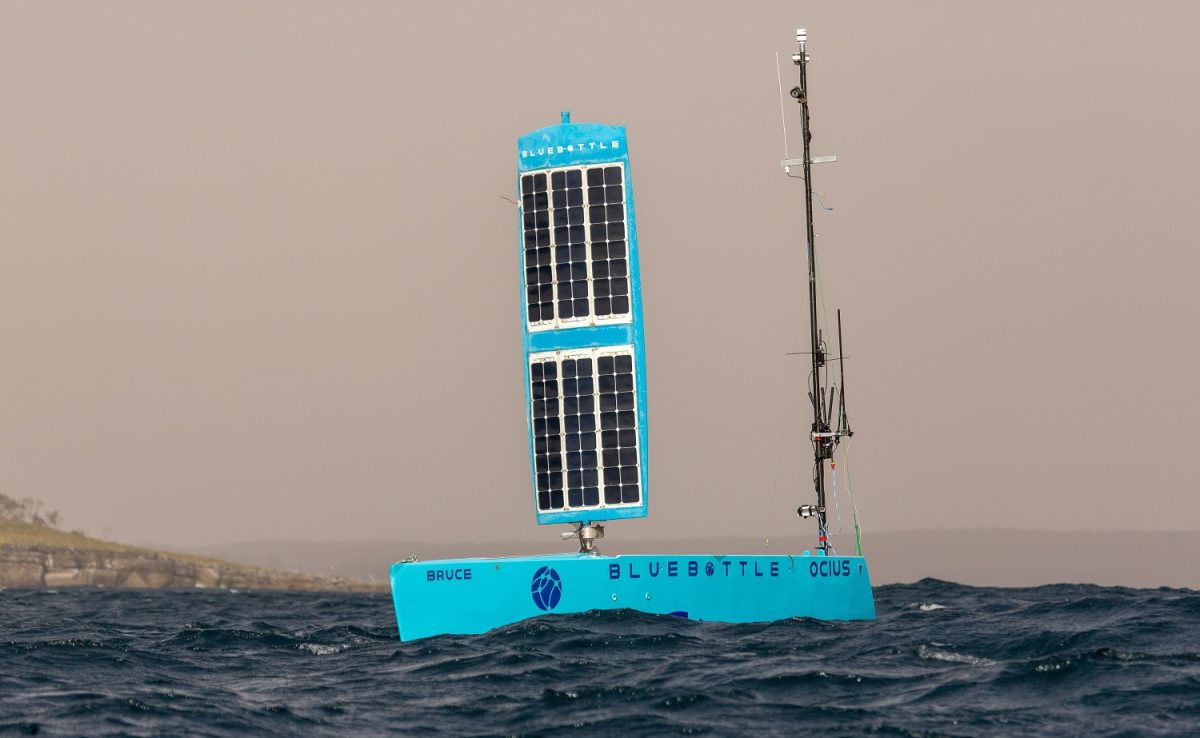
A BlueBottle USV sails on Jervis Bay during Autonomous Warrior 2018. Photo: ADF.
The Royal Australian Navy has taken delivery of the first two of five Ocius BlueBottle Uncrewed Surface Vessels (USV) as it seeks to expand its fleet of uncrewed capabilities.
Navy ordered the vessels after Ocius successfully demonstrated the BlueBottle at the Autonomous Warrior Operational Experimentation activity at HMAS Creswell on Jervis Bay in 2018 and again in 2022.
Autonomous Warrior 2018 was a demonstration designed to examine the potential of robotic, autonomous and uninhabited systems in support of Defence operations in coastal environments. It combined an exhibition, trials and exercising in-service systems.
The 2022 iteration expanded the concept to an overarching theme of Remote and Autonomous Systems and Artificial Intelligence (RAS-AI). It provided Australian and international military and industry partners opportunities to demonstrate innovations in autonomous and uncrewed systems and related technologies for use in the maritime and littoral domains, including operations in complex, congested and contested environments.
The 18-feet-long BlueBottle is powered by a unique combination of solar, wind and wave energy. Australian designed and developed, the vessel conducts long-endurance reconnaissance missions or acts as a communications relay platform.
The vessel’s battery is recharged by solar panels on the hard sail, and when deployed, the sail’s intelligent programming allows it to react autonomously to the sea, sun and wind conditions. When not required, it can be stowed flat on the vessel’s deck.
A unique rudder-flipper steers, guides and powers the BlueBottle, generating forward thrust from the pitching of the vessel in the ocean waves – the bigger the waves, the more thrust can be generated.
“As a trading nation, surrounded by oceans, a sustained maritime security presence is essential for assuring our national economy,” Minister for Defence Industry Pat Conroy said in a 6 March release. “Autonomous capabilities and innovative technologies, such as the Ocius BlueBottle Uncrewed Surface Vessels, will assist our Navy in supporting Australian interests.
“Powered by the wind, waves and the sun, the Ocius BlueBottle can autonomously monitor designated areas for extended lengths of time.”
Assistant Minister for Defence, Matt Thistlethwaite said Uncrewed Surface Vessels provided the Navy with a platform for continuous experimentation, including support to other autonomous surface and sub-surface systems. The remaining three Ocius BlueBottle USVs are expected to be delivered by July 2023.
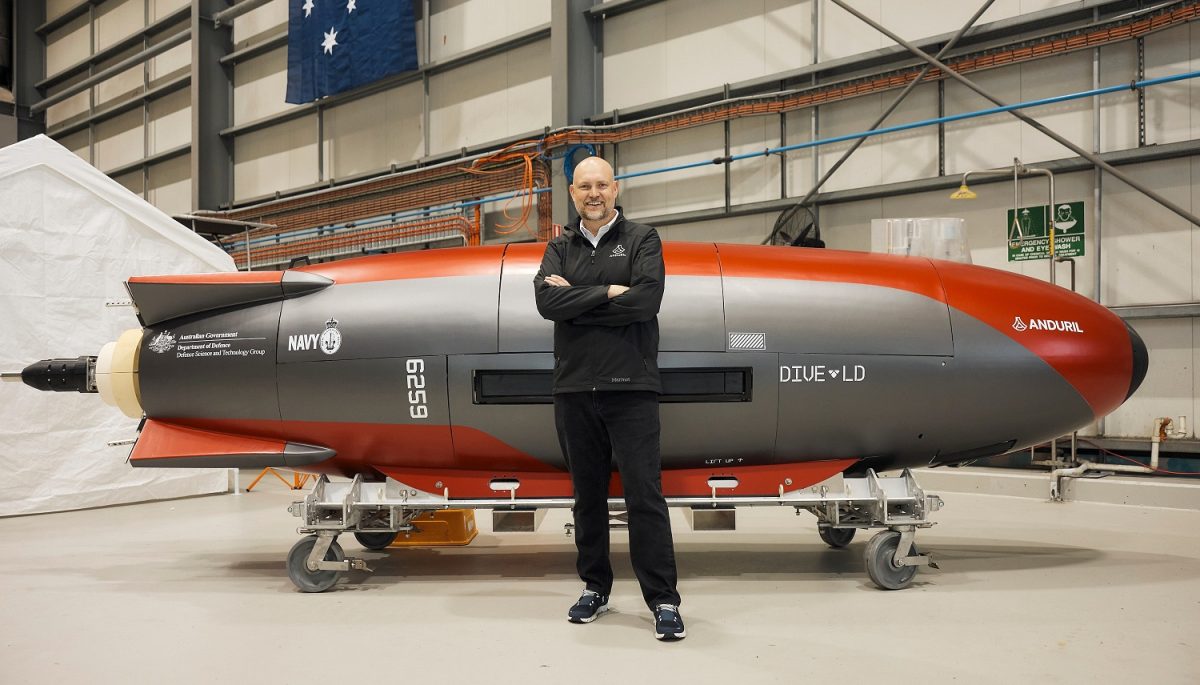
Senior vice president of engineering, Anduril, Dr Shane Arnott stands with the Dive-LD AUV at Anduril Australia’s Sydney Harbour base. Photo: Defence.
The delivery of the BlueBottles follows the December 2022 launch of an Australian-designed Extra-Large Autonomous Underwater Vehicle (XLAUV) which is being jointly developed by the Navy, the Defence Science and Technology (DST) Group and Anduril Australia.
Named `Ghost Shark’, the XLAUV’s collaborative development was made possible by the Next Generation Technologies Fund, and Defence scientists, Navy personnel and Anduril robotics specialists led by the company’s chief technology officer, Dr Shane Arnott. They are currently working together under a co-funded arrangement to produce three prototypes of the XLAUV.
While Australia’s XLAUVs are in development, a US-made Anduril Dive-LD autonomous submarine will act as a testbed vehicle for the various systems and concept developments.
The former head of Navy capability, Rear Admiral Peter Quinn said the stealthy, multi-role vessels, typically between 10 and 30 metres long, represented a new undersea warfare capability. “They have the capacity to remain at sea undetected for very long periods, carry various military payloads and cover very long distances,” he said at the December launch.
“The vessels will provide militaries with a persistent option for the delivery of underwater effects in high-risk environments, complementing our existing crewed ships and submarines, as well as other future uncrewed surface vessels.”
Chief Defence scientist Professor Tanya Monro said the project was an example of Defence’s innovation system in action. “By Defence Science and Technology Group collaborating with our industry, we are able to co-develop critical capability that meets our specific needs much faster,” she said.
If Navy adopts the XLAUV, it will work in conjunction with crewed submarines and surface vessels by providing underwater reconnaissance and mine clearing, particularly when transiting through island chains and littoral regions.
Original Article published by Andrew McLaughlin on Riotact.


